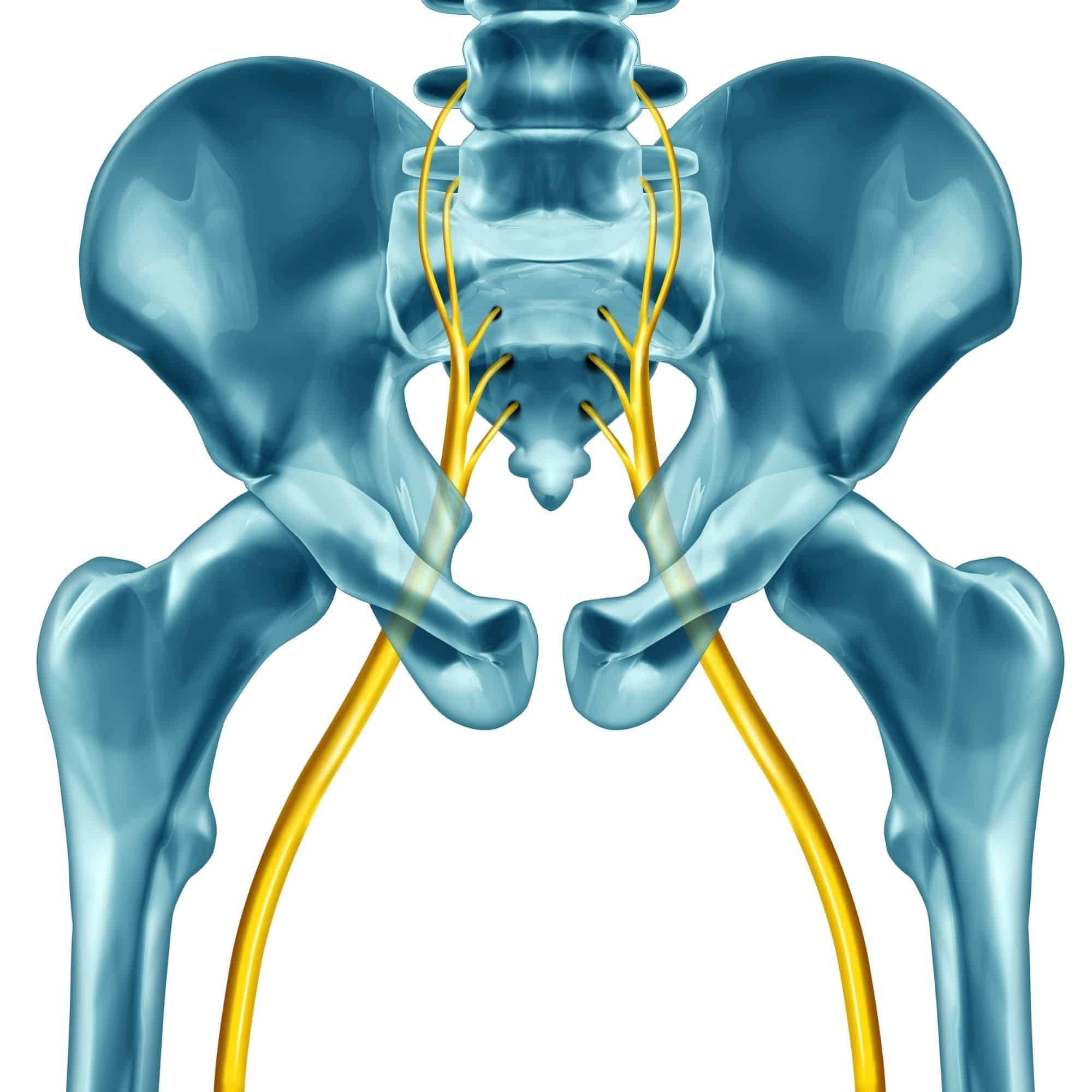Lumbar Radiculopathy (Sciatica)
The sciatic nerve is the largest nerve found in that body. This nerve is formed by 5 different spinal nerve roots that start at L4 through S3 (displayed in the picture to the right)-- passes deep in the buttock, down the back of the thigh, and all the way to the heel and sole of the foot.
Signs and symptoms of sciatic pain:
- Pain
- Weakness
- Numbness
- Tingling

What is Sciatica?
This condition is an irritation or compression of one or more nerve roots in the lumbar spine. Because these nerves travel to the hips, buttocks, legs, and feet, injury in the lumbar spine can cause symptoms in these areas. Sciatica may result from a variety of problems with the bones and tissues of the lumbar spinal column.
What can cause sciatic pain?
- Herniated Disc - a herniated dist is a rupture in the fibrous outer wall of the vertebral disc, which allows the soft nucleus of the disc to bulge outward. This bulge can press harmfully against a nerve root.
- Degenerative Disc Disease - this occurs when a spinal disc weakens, allowing vertebral bones above and below the disc to shift out of position. The bones can touch, pinching nearby new roots.
- Spinal Stenosis - this happens when bones, discs, or joints of the spine degenerate, bony spurs may form and push into the spinal canal or foramen space. This is can create harmful pressure against the nerve roots.
Nonsurgical Treatments for Sciatica
- Physical therapy - this combines the combination of strengthening, stretching, and some conditioning, such as:
- Strengthen the spine and muscles around your lower back, abdomen, buttocks, and hip.
- Stretch tight and inflexible muscles, for example, hamstrings
- Increase core strength
- Encourage the exchange of fluids and nutrients in the body by light aerobic exercises
- Medications - your provider may recommend you take over the counter medications or prescribe medications
- Nonsteroidal anti-inflammatory drugs (NSAIDs), such as ibuprofen, naproxen, Motrin, and Aleve
- Oral steroids, like prednisone
- Anticonvulsant medications, like gabapentin
- Tricyclic antidepressants, like amitriptyline
- Opioid analgesics
- Lumbar therapeutic injections - epidural steroid injections can help relieve some sciatic pain stemming from spinal stenosis, disc herniation, or degenerative disc disease.








